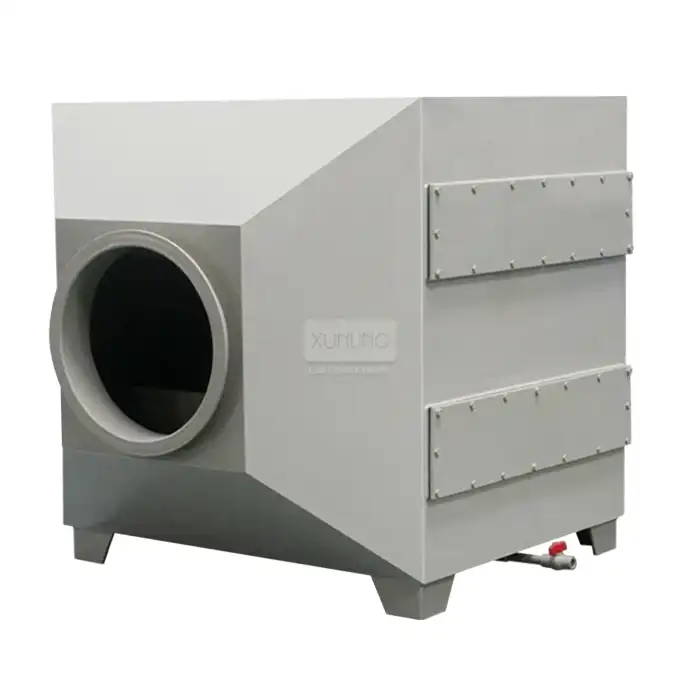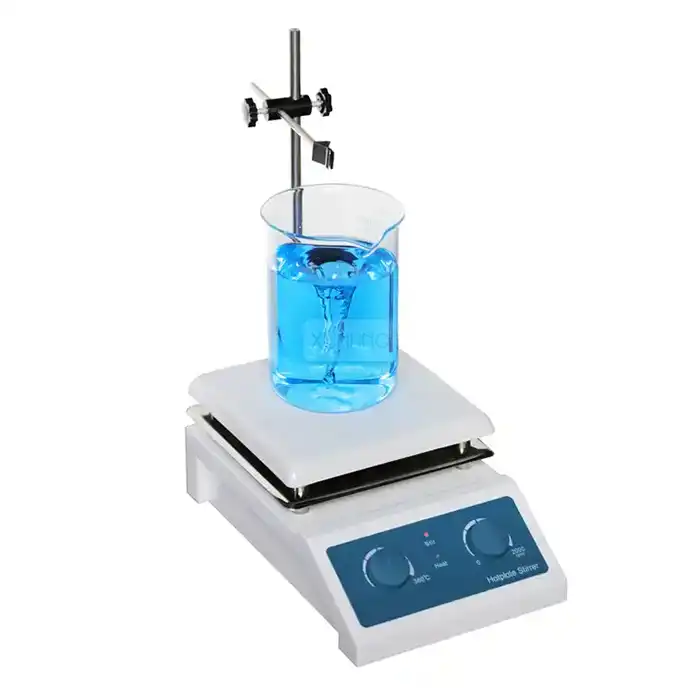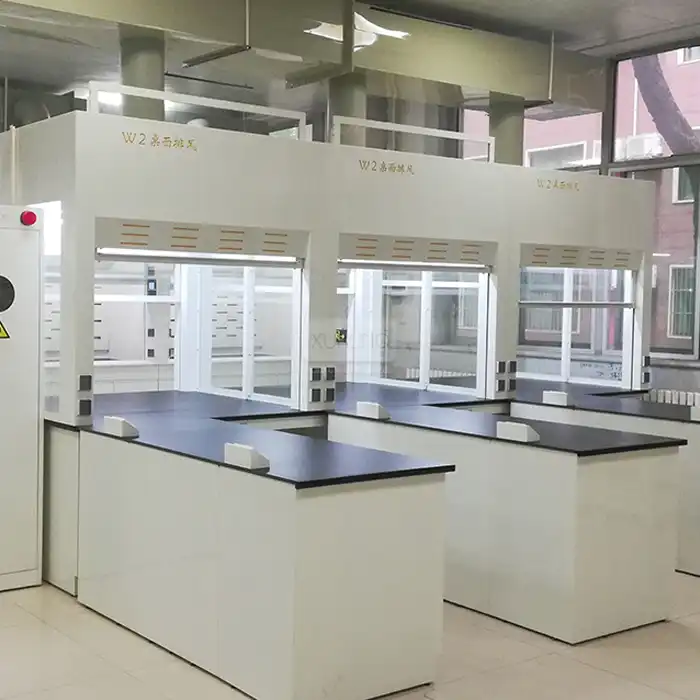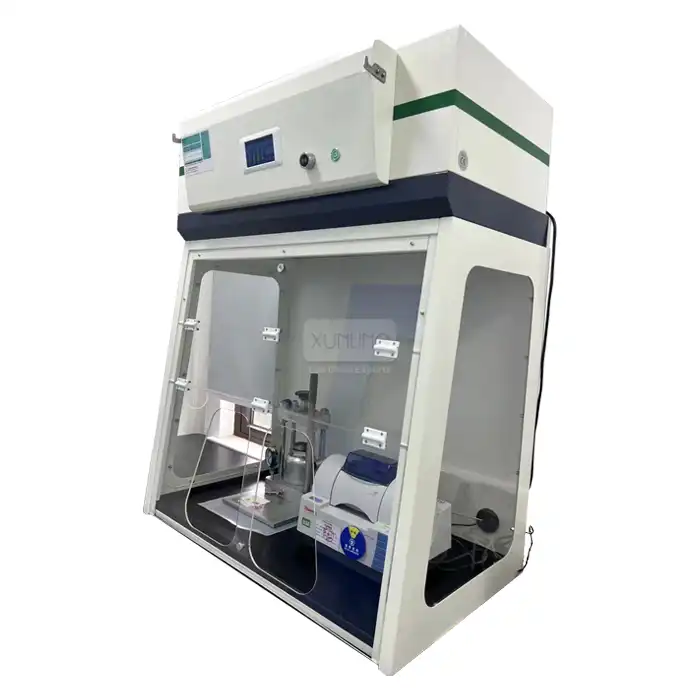
Laboratory Analytical Balance: Which Model Fits Your Budget?
2025-09-23 09:00:02
When selecting a Laboratory Analytical Balance, finding the right model that aligns with your budget while meeting precision requirements is crucial for laboratory operations. The answer to "Laboratory Analytical Balance: Which Model Fits Your Budget?" depends on your specific weighing needs, required precision levels, and available funding. Modern Laboratory Analytical Balance systems offer varying capabilities from basic weighing functions to advanced data management features, with prices typically ranging from budget-friendly options under $3,000 to high-end models exceeding $10,000. Understanding the key factors that influence cost and performance will guide you toward making an informed decision that maximizes value while ensuring accurate, reliable measurements for your laboratory applications.
Budget Categories and Model Selection for Laboratory Analytical Balance
Entry-Level Laboratory Analytical Balance Options
For laboratories operating with constrained budgets or those requiring basic analytical weighing capabilities, entry-level Laboratory Analytical Balance models provide excellent value without compromising essential precision. These models typically feature readabilities of 0.1mg to 1mg and are suitable for routine analytical work in educational institutions, quality control laboratories, and small research facilities. The Xi'an Xunling XL-JA1003 exemplifies this category, offering a weighing range of 0-100g with 1mg readability and equipped with essential features including high-precision electromagnetic sensors and one-click calibration functionality. Entry-level models focus on core weighing performance while maintaining cost-effectiveness through streamlined feature sets. These Laboratory Analytical Balance units incorporate high-definition LCD displays for clear measurement reading and electromagnetic force sensors that ensure measurement stability and repeatability. The compact design with dimensions of 355×213×346mm makes them suitable for laboratories with limited bench space. Additionally, these models include fundamental protection features such as automatic fault detection and overload protection, ensuring long-term reliability and preventing costly damage from operational errors. The inclusion of multiple weighing units (grams, carats, ounces) and basic functions like counting and percentage weighing provides versatility for various analytical applications. Budget-conscious laboratories can expect reliable performance from entry-level Laboratory Analytical Balance models while maintaining operational efficiency. These units typically consume minimal power (approximately 15W) and feature built-in RS232C interfaces for basic data connectivity, enabling integration with simple laboratory information management systems. The one-click calibration feature significantly reduces maintenance time and ensures measurement accuracy without requiring extensive technical expertise. For laboratories performing routine analytical work, these models provide the necessary precision and reliability at accessible price points, making them ideal for educational settings, small manufacturing operations, and startup research facilities.
Mid-Range Laboratory Analytical Balance Solutions
Mid-range Laboratory Analytical Balance models bridge the gap between basic functionality and advanced features, offering enhanced capabilities for laboratories requiring higher throughput and improved measurement precision. These models typically feature expanded weighing ranges and additional analytical functions while maintaining reasonable pricing structures. The XL-JA5103 and XL-JA11003 models represent this category, providing weighing capacities up to 510g and 1100g respectively, with larger weighing plates accommodating diverse sample types and sizes. The mid-range category emphasizes improved measurement consistency and enhanced user interface features. These Laboratory Analytical Balance units incorporate advanced electromagnetic sensors that provide superior stability and faster settling times, crucial for high-volume analytical work. The expanded weighing plate sizes (φ80mm to φ110mm) accommodate larger samples and irregularly shaped specimens, increasing laboratory versatility. Enhanced display systems with improved contrast and readability ensure accurate measurement interpretation under various lighting conditions, while advanced calibration algorithms maintain long-term measurement accuracy with minimal user intervention. Mid-range Laboratory Analytical Balance models excel in environments requiring consistent analytical performance with moderate feature complexity. These units often include expanded connectivity options, allowing integration with comprehensive laboratory data management systems and enabling automated data logging for regulatory compliance. The robust construction and enhanced protection features ensure reliable operation in demanding laboratory environments while maintaining measurement precision over extended operational periods. For laboratories processing moderate sample volumes with varying analytical requirements, mid-range models provide optimal balance between functionality and cost-effectiveness.
Premium Laboratory Analytical Balance Features
Premium Laboratory Analytical Balance systems represent the pinnacle of analytical weighing technology, incorporating advanced features and superior precision capabilities for demanding laboratory applications. These models typically feature sub-milligram readabilities, extensive automation capabilities, and comprehensive data management integration. Premium systems are designed for laboratories requiring the highest measurement accuracy, extensive regulatory compliance, and integration with sophisticated analytical workflows. Advanced Laboratory Analytical Balance models incorporate cutting-edge sensor technology, often featuring magnetic force restoration systems with enhanced temperature compensation and vibration filtering. These technological improvements result in superior measurement repeatability and reduced settling times, crucial for high-throughput analytical laboratories. Premium models frequently include motorized internal calibration systems that automatically maintain measurement accuracy according to predetermined schedules, eliminating manual calibration requirements and ensuring consistent performance. Environmental monitoring capabilities detect temperature, humidity, and air pressure changes, automatically compensating for environmental influences on measurement accuracy. Premium Laboratory Analytical Balance systems offer comprehensive connectivity and data management capabilities, supporting advanced laboratory information management system integration and regulatory compliance requirements. These models typically include multiple communication interfaces (USB, Ethernet, wireless), enabling seamless data transfer and remote monitoring capabilities. Advanced user interface systems with color touchscreens provide intuitive operation and comprehensive measurement documentation. For pharmaceutical, biotechnology, and research laboratories requiring the highest analytical standards, premium models justify their investment through superior performance, regulatory compliance capabilities, and long-term reliability.
Performance Specifications and Budget Considerations
Precision Requirements vs. Cost Analysis
Understanding the relationship between precision requirements and Laboratory Analytical Balance costs is essential for making informed purchasing decisions. Measurement precision directly influences instrument cost, with each additional decimal place of readability significantly impacting price. Laboratories must carefully evaluate their actual precision needs against available budget allocations to optimize value and functionality. The cost differential between 1mg and 0.1mg readability can represent substantial budget implications, making requirement analysis crucial for cost-effective procurement. Laboratory Analytical Balance precision requirements depend on specific analytical applications and regulatory compliance needs. Pharmaceutical laboratories conducting potency assays may require 0.1mg or better readability, while quality control laboratories performing routine testing may achieve acceptable results with 1mg precision. Environmental monitoring laboratories analyzing trace contaminants need exceptional precision, while educational institutions performing basic analytical training can operate effectively with standard precision levels. Understanding these application-specific requirements prevents over-specification and associated cost increases while ensuring adequate measurement capability. Cost-benefit analysis for Laboratory Analytical Balance procurement should consider long-term operational requirements and potential future needs. Investing in slightly higher precision capabilities may prove cost-effective if analytical requirements expand or regulatory standards become more stringent. Additionally, higher precision models often incorporate superior build quality and enhanced features that improve operational efficiency and reduce maintenance costs. The evaluation should include total cost of ownership considerations, including calibration requirements, maintenance schedules, and potential productivity improvements from enhanced measurement capabilities.
Feature Integration and Value Assessment
Modern Laboratory Analytical Balance systems offer extensive feature integration that significantly impacts overall value proposition and operational efficiency. Understanding which features provide genuine value for specific laboratory applications prevents unnecessary cost increases while ensuring optimal functionality. Core features like electromagnetic sensors, digital displays, and basic calibration capabilities are standard across most models, while advanced features like automated calibration, environmental monitoring, and comprehensive data management require careful evaluation of necessity and cost-benefit relationships. Essential Laboratory Analytical Balance features include high-precision weighing sensors, clear display systems, and reliable calibration mechanisms. These fundamental capabilities ensure accurate measurements and long-term reliability. Advanced features such as motorized doors, automated sample changers, and integrated environmental monitoring provide operational convenience and enhanced measurement accuracy but significantly increase initial investment costs. Data management capabilities including comprehensive connectivity options, automated data logging, and integration with laboratory information systems improve operational efficiency and regulatory compliance but require evaluation of actual utilization and benefit realization. Value assessment for Laboratory Analytical Balance features should consider operational workflow improvements and long-term productivity gains. Features that reduce manual intervention, improve measurement throughput, or enhance data quality may justify higher initial costs through operational efficiency improvements. Additionally, features supporting regulatory compliance and quality assurance requirements provide value through reduced audit risks and improved documentation capabilities. The key is identifying which advanced features align with actual laboratory requirements rather than purchasing capabilities that remain underutilized.
Maintenance and Operating Cost Considerations
Laboratory Analytical Balance total cost of ownership extends significantly beyond initial purchase price, encompassing maintenance requirements, calibration costs, and operational expenses throughout the instrument lifecycle. Understanding these ongoing costs is crucial for accurate budget planning and model selection. Different balance technologies and feature levels require varying maintenance intensities and associated costs, making lifecycle cost analysis essential for informed decision-making. Regular calibration represents a significant ongoing cost for Laboratory Analytical Balance operation, with frequency and complexity varying based on precision requirements and application criticality. Models with automated internal calibration capabilities reduce ongoing calibration costs and labor requirements while ensuring consistent measurement accuracy. External calibration services for high-precision models can represent substantial annual expenses, particularly for laboratories requiring frequent calibration cycles for regulatory compliance. Understanding calibration requirements and associated costs during model selection prevents unexpected operational expenses and ensures adequate budget allocation for proper instrument maintenance. Laboratory Analytical Balance operational efficiency features can significantly impact long-term operating costs through reduced labor requirements and improved productivity. Models with rapid stabilization times, automated sample handling capabilities, and integrated data management reduce manual intervention and processing time per measurement. These efficiency improvements translate to reduced labor costs and increased analytical throughput, potentially justifying higher initial investment costs through operational savings. Additionally, models with enhanced durability and reliability reduce unexpected repair costs and minimize analytical disruption, providing value through consistent operational availability.
Implementation Strategies for Budget-Conscious Laboratories
Cost-Effective Procurement Approaches
Strategic procurement approaches enable laboratories to acquire appropriate Laboratory Analytical Balance capabilities while optimizing budget utilization and ensuring long-term value. Understanding various purchasing options, financing alternatives, and vendor relationships can significantly impact total acquisition costs and operational flexibility. Budget-conscious laboratories should explore comprehensive procurement strategies that balance immediate cost considerations with long-term operational requirements and potential future expansion needs. Laboratory Analytical Balance procurement benefits from careful vendor evaluation and relationship development. Established manufacturers like Xi'an Xunling Electronic Technology Co., Ltd. offer comprehensive product lines enabling laboratories to standardize on single-vendor solutions while maintaining competitive pricing through volume considerations. OEM relationships and direct manufacturer purchasing can provide cost advantages over distributor channels while ensuring authentic products and comprehensive support services. Additionally, exploring refurbished and certified pre-owned options can provide access to higher-specification instruments at reduced costs, particularly suitable for laboratories with moderate precision requirements. Financing and leasing options provide budget flexibility for Laboratory Analytical Balance acquisition, enabling laboratories to access required capabilities without significant capital expenditure impacts. These arrangements often include maintenance and calibration services, converting variable operational costs to predictable monthly expenses. Educational and research institutions may qualify for special pricing programs and grant funding opportunities that significantly reduce acquisition costs. Understanding these alternative procurement approaches enables laboratories to acquire appropriate analytical capabilities while maintaining financial flexibility for other operational requirements.
Long-term Value Optimization
Laboratory Analytical Balance value optimization requires strategic planning that considers current requirements, potential future needs, and technological advancement trends. Purchasing decisions should balance immediate cost constraints with long-term operational flexibility and adaptation capabilities. Understanding technological development trajectories and industry trends helps ensure selected instruments remain viable and supportive of laboratory operations throughout their expected service life. Technology roadmap awareness helps laboratories make informed Laboratory Analytical Balance selections that anticipate future requirements and integration needs. Modern instruments increasingly emphasize connectivity, data management, and automation capabilities that support evolving laboratory workflows. Selecting models with expandable connectivity options and software upgrade capabilities ensures long-term compatibility with emerging laboratory information systems and regulatory requirements. Additionally, manufacturers offering comprehensive software support and feature updates provide value through extended instrument utility and capability enhancement. Laboratory Analytical Balance lifecycle management strategies should address calibration scheduling, preventive maintenance, and eventual replacement planning. Establishing relationships with service providers and understanding spare parts availability ensures consistent operational capability throughout instrument life. Additionally, planning for eventual technology upgrades and replacement cycles enables budget allocation and ensures continuous analytical capability. Laboratories implementing comprehensive lifecycle management achieve optimal value through extended instrument utility, reduced operational disruption, and strategic technology advancement.
Conclusion
Selecting the appropriate Laboratory Analytical Balance requires careful balance between budget constraints and analytical requirements. Entry-level models provide essential capabilities for basic applications, while mid-range options offer enhanced features for demanding workflows. Premium systems deliver superior precision and advanced functionality for critical applications. Xi'an Xunling Electronic Technology Co., Ltd. provides comprehensive solutions across all budget categories, ensuring laboratories can access reliable, high-quality analytical balances regardless of financial constraints. Our commitment to manufacturing excellence and customer support makes us the ideal partner for your analytical weighing needs.
Whether you're seeking cost-effective entry-level solutions or advanced premium systems, our comprehensive product line ensures optimal value for your investment. As a leading China Laboratory Analytical Balance factory and trusted China Laboratory Analytical Balance supplier, Xi'an Xunling Electronic Technology Co., Ltd. combines manufacturing excellence with competitive pricing. Our position as a premier China Laboratory Analytical Balance manufacturer enables us to offer superior quality instruments at attractive wholesale pricing. We provide High Quality Laboratory Analytical Balance systems with competitive Laboratory Analytical Balance price points, making professional analytical capabilities accessible across diverse budget ranges. For detailed specifications and pricing on our complete range of Laboratory Analytical Balance for sale, contact our expert team at xalabfurniture@163.com. Experience the difference of working with industry-leading professionals dedicated to advancing laboratory analytical capabilities worldwide.
References
1. "Analytical Balance Selection Guide: Precision and Accuracy in Laboratory Measurements" - American Chemical Society Laboratory Safety Committee
2. "Laboratory Balance Technology and Applications" - International Laboratory Equipment Association Technical Standards Committee
3. "Quality Control in Analytical Weighing: Best Practices for Laboratory Operations" - National Institute of Standards and Technology Metrology Division
4. "Modern Laboratory Balance Systems: Design Principles and Performance Optimization" - Society for Laboratory Automation and Screening Technical Publications
YOU MAY LIKE







_1743667274497.webp)

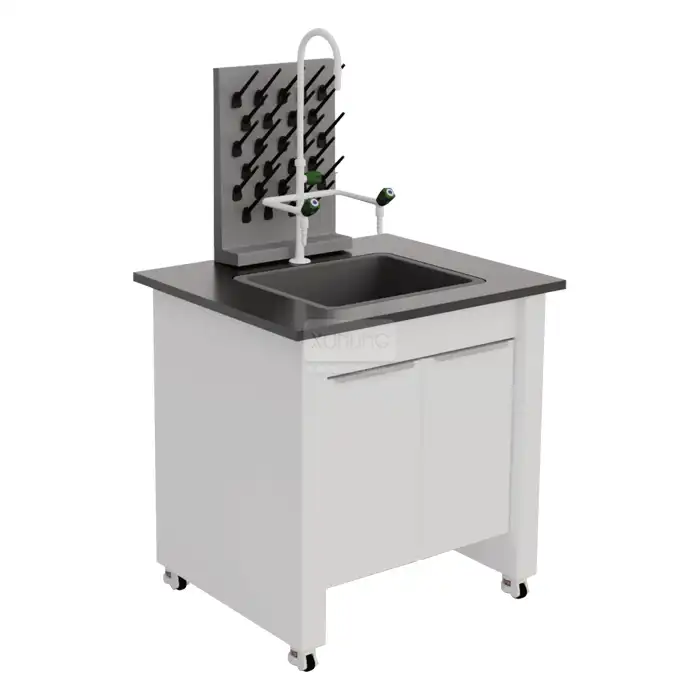
_1735472430670.webp)
